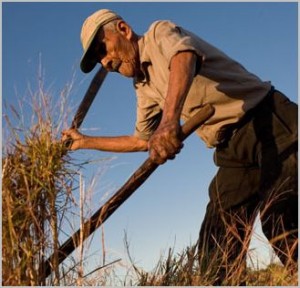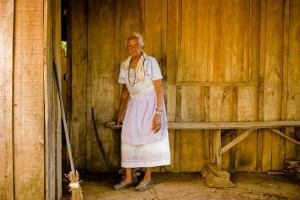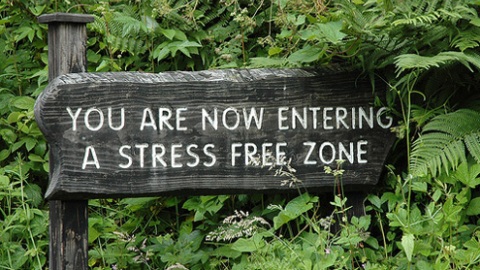Costa Rica Living News – Living a longer life and fuller life has been a constant among human quests. Today, we are bombarded by constantly changing trends on what on what we need to do (or not do, in most cases) in order to buy a few extra years of life. From yoga to power foods to miracle berries to marathons, the list goes on.
 Experts generally agree that a healthy and long life depends not only on genetic factors, but also on lifestyle. Our eating and sleeping habits, exposure to stress, amount of exercise, as well as environmental factors play an important a role in determining not only the quantity but also the quality of our days under the sun.
Experts generally agree that a healthy and long life depends not only on genetic factors, but also on lifestyle. Our eating and sleeping habits, exposure to stress, amount of exercise, as well as environmental factors play an important a role in determining not only the quantity but also the quality of our days under the sun.
Geographic location is also important –the average life expectancy in rich countries such as Monaco is expected to be 89.6 this year, according to the CIA World Factbook, whereas the average Haitian, who will not have the same access to healthcare, nutrition, and basic services, will only live to be 62, for example.
So what does it take to attain longevity?
Nicoyan Costa Ricans seem to have found the fountain of youth.
In early 2006, researchers found that villagers in and around the Nicoya Peninsula in the Central American country of Costa Rica were living significantly longer than the rest of the country. The 80-mile-long Nicoya Peninsula is located in the Guanacaste province of Costa Rica, along the country’s Pacific coast and just south of the border with Nicaragua. Accessible only by ferry until 2003, Nicoya is home to a little over 20,000 inhabitants who are dedicated to the region’s mostly agricultural economy, just as their ancestors before them.
What distinguishes this small cluster of villages from its Costa Rican counterparts, and indeed most of the world, is the lifespan of its people. Nicoya has been declared a “Blue Zone” – which refers to places that have the greatest life expectancy and where more people reach the age of 100 than anywhere else.
Dan Buettner, a National Geographic writer and the author of “Blue Zones, Lessons for Living Longer from the People Who’ve Lived the Longest”, which went on to become a best-selling book, spent five years travelling the globe in search for the places where people were happiest, gathering their tips for a longer and fuller life. He found Nicoya in 2006, and included the small paradise among the list, which includes locations in in California, Iowa, Minnesota, and Japan.
The key?
One of the main life-prolonger in the Nicoyan peninsula is the water source, which is rich in minerals like  calcium and magnesium that promote good health. But natural resources hardly account for the 100-plus active men and women in the region.
calcium and magnesium that promote good health. But natural resources hardly account for the 100-plus active men and women in the region.
Nicoyans live according to a carefully laid out plan centered on a major power – most Costa Ricans are Roman Catholics, and faith and spirituality plays an important part of daily life. Social networks and family ties are valued highly, as is a strong work ethic and strict daily routines.
A well-balanced diet is a crucial aspect of their lifestyle. Nicoyans never overeat, and their main intakes are fresh local produce, in addition to lots of water. A good-night rest is also mandated, which for the locals is not hard to do, given that a shortage of electricity supply means that lights out comes early every night.
Humberto Angulo, a 98-year old resident of Carillo, in Guanacaste never stayed put, working tirelessly since he was a little boy. He told local newspaper La Nacion that he was already making plans for his 100th birthday celebration.
Pura Vida
As it is, Costa Ricans have average lengthier life spans than other countries in the region. The CIA Factbook indicates that this year the span will be 78.1 years of age, topped only by Chile, where the age will be 78.3, and Panama, with 78.1. This is comparable to the US, which posted 78.6, and Belgium with 79.8.
This longevity is doubtlessly related to the favorable living conditions in Costa Rica. Dubbed locally as “the Switzerland of Central America”, strong economic growth and political stability, especially in relation to its neighbors, has made this country of 4.5 million a desirable destination, both for the thousands of tourists who flock its beaches and tropical forests, and for those who call it home. Health care is prevalent, and public investment in education is high. Almost 95% of the population is literate, much higher than its close neighbor Nicaragua, where only 67.5% can read and write, and crime levels are below that of other countries in the region.
The Costa Rican government seems to be fully aware of their comparative advantage, and has recently ramped up its support in Guanacaste.
According to Erik Badilla Monge, a consultant to the Major of Nicoya, the municipal government is currently leading a comprehensive strategy aimed at promoting Nicoya. The plan includes increasing tourism – both destination and medical tourism, a booming trend in the country, as well as implementing a new intelligent security surveillance system through the entire municipality, which will prevent crime levels in the area from rising and help abate practices such as logging, a major risk for the area.
Protecting natural reserouces in the area is the backbone of the plan, with ongoing recycling, waste disposal, and reforestation programs. They have adopted the motto “Nicoya, blue zone of the word, a great place to live”, said Badilla.
“Our intention is that our Blue Zone not only remains Blue, but also looks Blue”, commented Badilla to Nearshore Americas.
“Pura vida” or “pure life”, which is how Costaricans or “Ticos” greet each other, a phrase which can be loosely translated to “this is life” or “”life is good”. Among Ticos, Nicoyans should most definitely agree.
From Nearshore Americas

